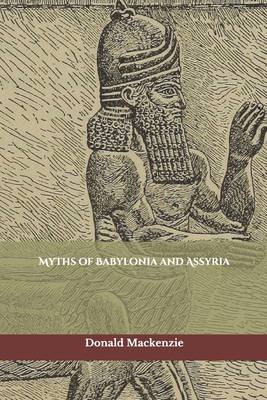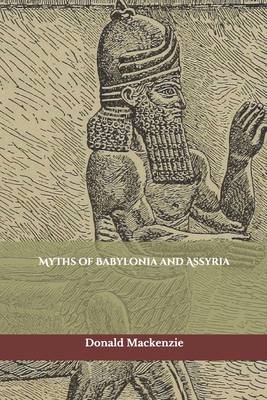
- Retrait gratuit dans votre magasin Club
- 7.000.000 titres dans notre catalogue
- Payer en toute sécurité
- Toujours un magasin près de chez vous
- Retrait gratuit dans votre magasin Club
- 7.000.0000 titres dans notre catalogue
- Payer en toute sécurité
- Toujours un magasin près de chez vous
Description
This volume deals with the myths and legends of Babylonia and Assyria, and as these reflect the civilization in which they developed, a historical narrative has been provided, beginning with the early Sumerian Age and concluding with the periods of the Persian and Grecian Empires. Over thirty centuries of human progress are thus passed under review. During this vast interval of time the cultural influences emanating from the Tigro-Euphrates valley reached far-distant shores along the intersecting avenues of trade, and in consequence of the periodic and widespread migrations of peoples who had acquired directly or indirectly the leavening elements of Mesopotamian civilization. Even at the present day traces survive in Europe of the early cultural impress of the East; our "Signs of the Zodiac", for instance, as well as the system of measuring time and space by using 60 as a basic numeral for calculation, are inheritances from ancient Babylonia. As in the Nile Valley, however, it is impossible to trace in Mesopotamia the initiatory stages of prehistoric culture based on the agricultural mode of life. What is generally called the "Dawn of History" is really the beginning of a later age of progress; it is necessary to account for the degree of civilization attained at the earliest period of which we have knowledge by postulating a remoter age of culture of much longer duration than that which separates the "Dawn" from the age in which we now live. Although Sumerian (early Babylonian) civilization presents distinctively local features which justify the application of the term "indigenous" in the broad sense, it is found, like that of Egypt, to be possessed of certain elements which suggest exceedingly remote influences and connections at present obscure. Of special interest in this regard is Professor Budge's mature and well-deliberated conclusion that "both the Sumerians and early Egyptians derived their primeval gods from some common but exceedingly ancient source". The prehistoric burial customs of these separate peoples are also remarkably similar and they resemble closely in turn those of the Neolithic Europeans. The cumulative effect of such evidence forces us to regard as not wholly satisfactory and conclusive the hypothesis of cultural influence. A remote racial connection is possible, and is certainly worthy of consideration when so high an authority as Professor Frazer, author of The Golden Bough, is found prepared to admit that the widespread "homogeneity of beliefs" may have been due to "homogeneity of race". It is shown (Chapter 1) that certain ethnologists have accumulated data which establish a racial kinship between the Neolithic Europeans, the proto-Egyptians, the Sumerians, the southern Persians, and the Aryo-Indians. Throughout this volume comparative notes have been compiled in dealing with Mesopotamian beliefs with purpose to assist the reader towards the study of linking myths and legends. Interesting parallels have been gleaned from various religious literatures in Europe, Egypt, India, and elsewhere. It will be found that certain relics of Babylonian intellectual life, which have a distinctive geographical significance, were shared by peoples in other cultural areas where they were similarly overlaid with local colour. Modes of thought were the products of modes of life and were influenced in their development by human experiences. The influence of environment on the growth of culture has long been recognized, but consideration must also be given to the choice of environment by peoples who had adopted distinctive habits of life. Racial units migrated from cultural areas to districts suitable for colonization and carried with them a heritage of immemorial beliefs and customs which were regarded as being quite as indispensable for their welfare as their implements and domesticated animals.
Spécifications
Parties prenantes
- Auteur(s) :
- Editeur:
Contenu
- Nombre de pages :
- 372
- Langue:
- Anglais
- Collection :
- Tome:
- n° 37
Caractéristiques
- EAN:
- 9781659595383
- Date de parution :
- 15-01-20
- Format:
- Livre broché
- Format numérique:
- Trade paperback (VS)
- Dimensions :
- 152 mm x 229 mm
- Poids :
- 544 g

Les avis
Nous publions uniquement les avis qui respectent les conditions requises. Consultez nos conditions pour les avis.






